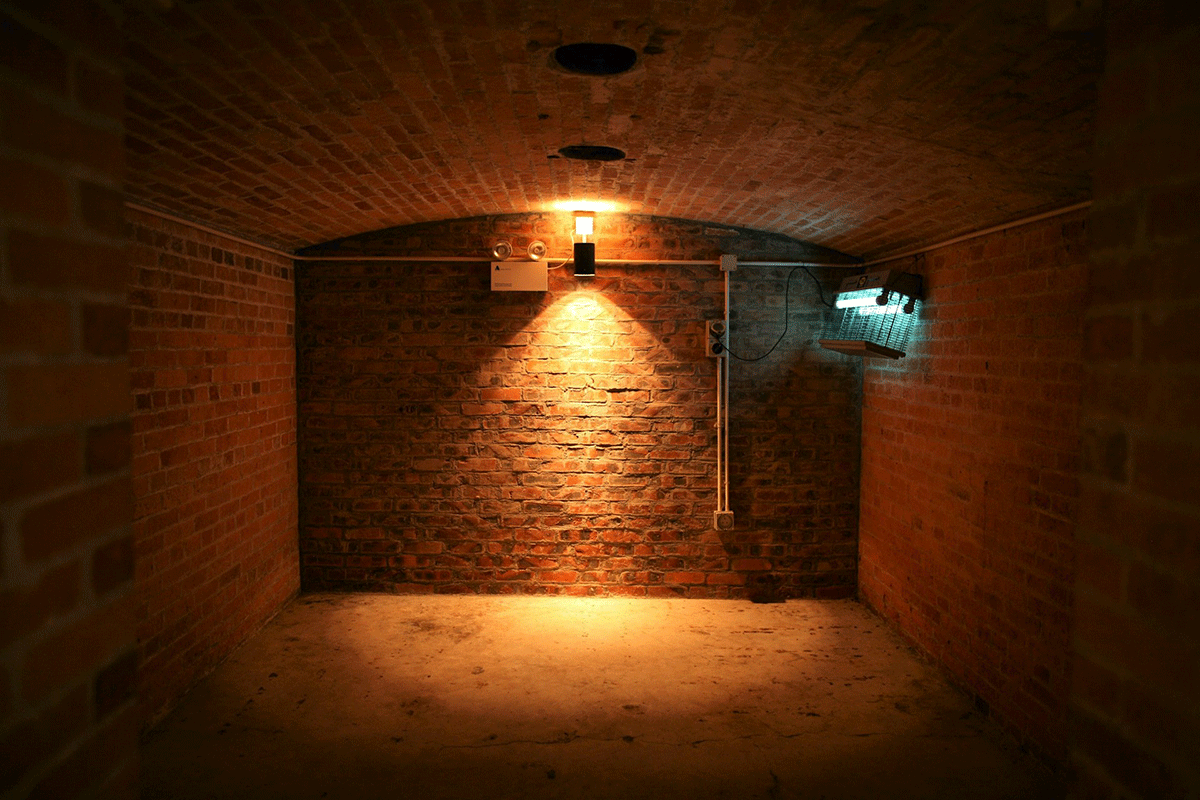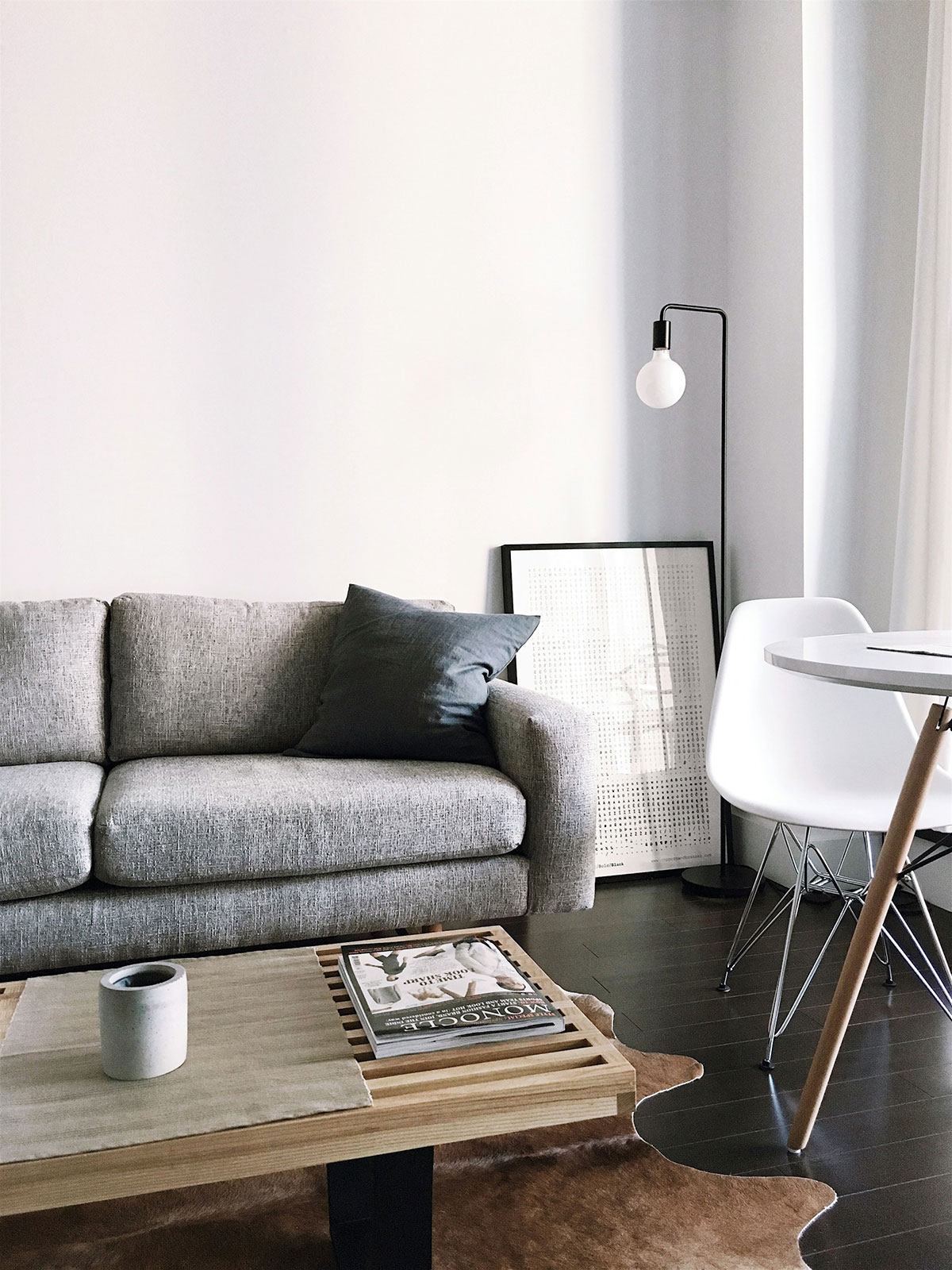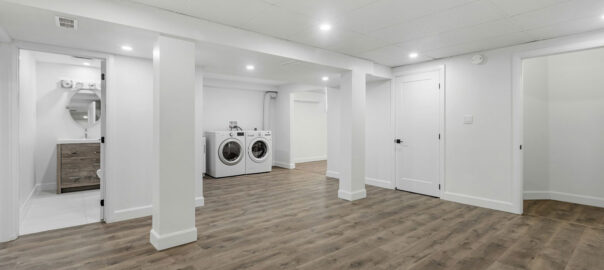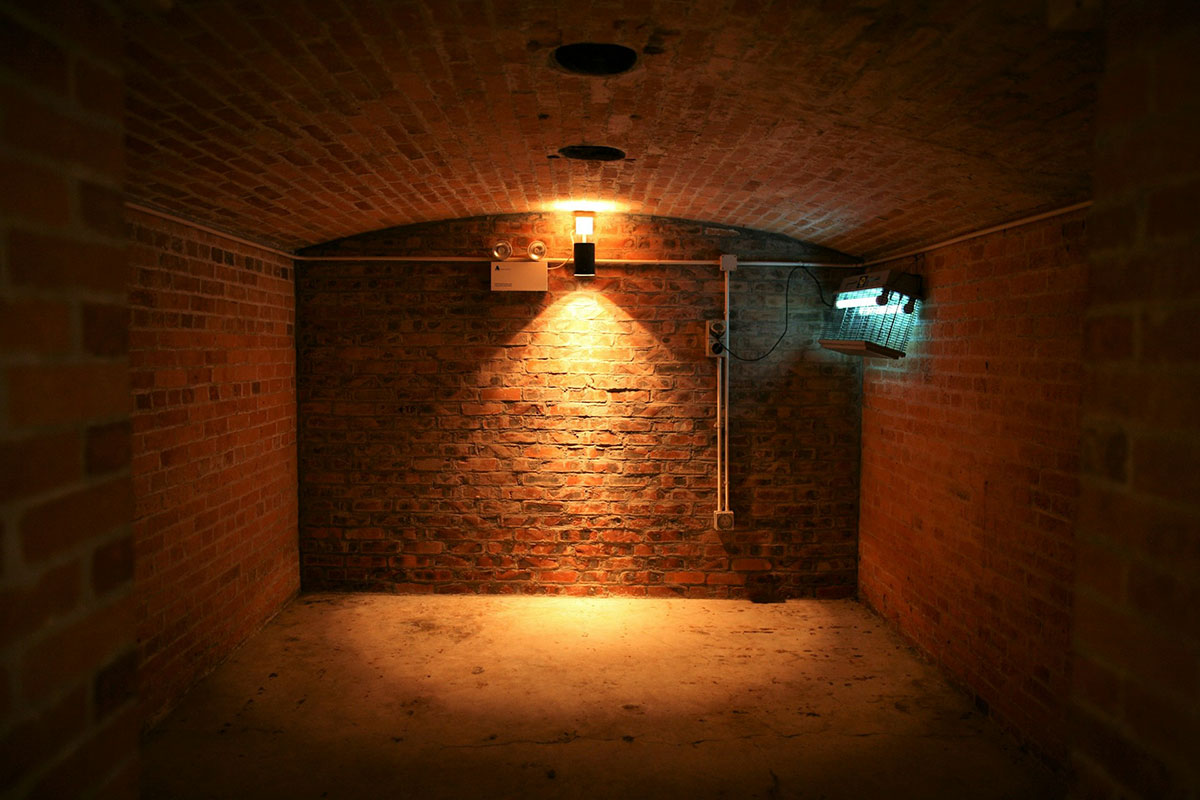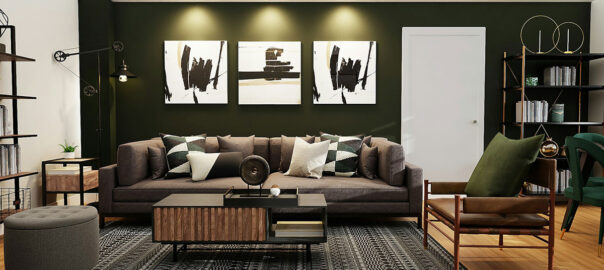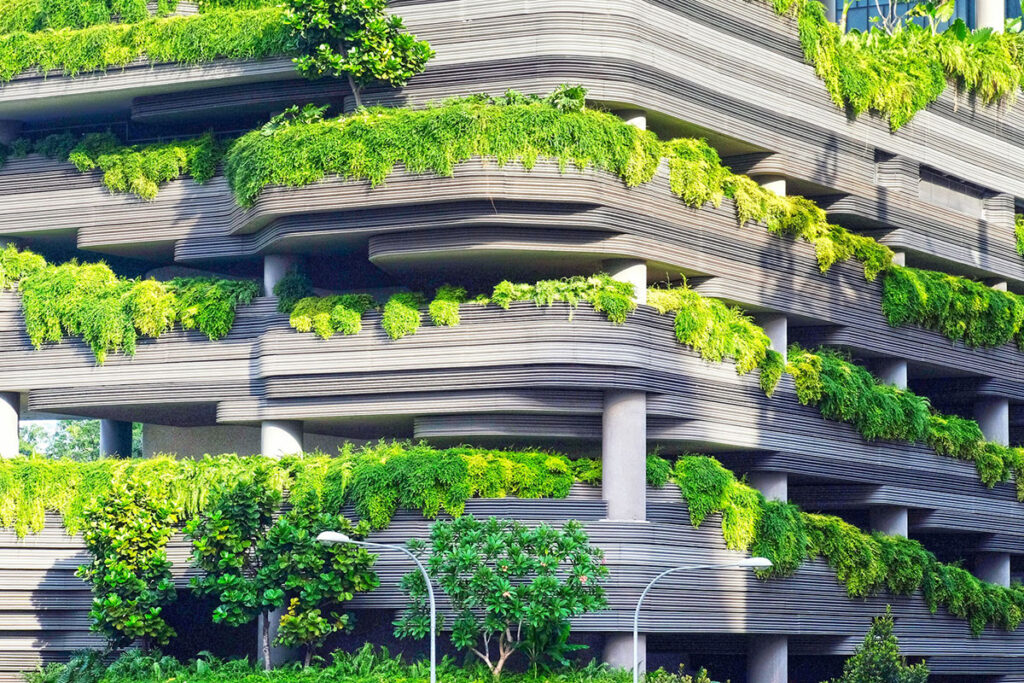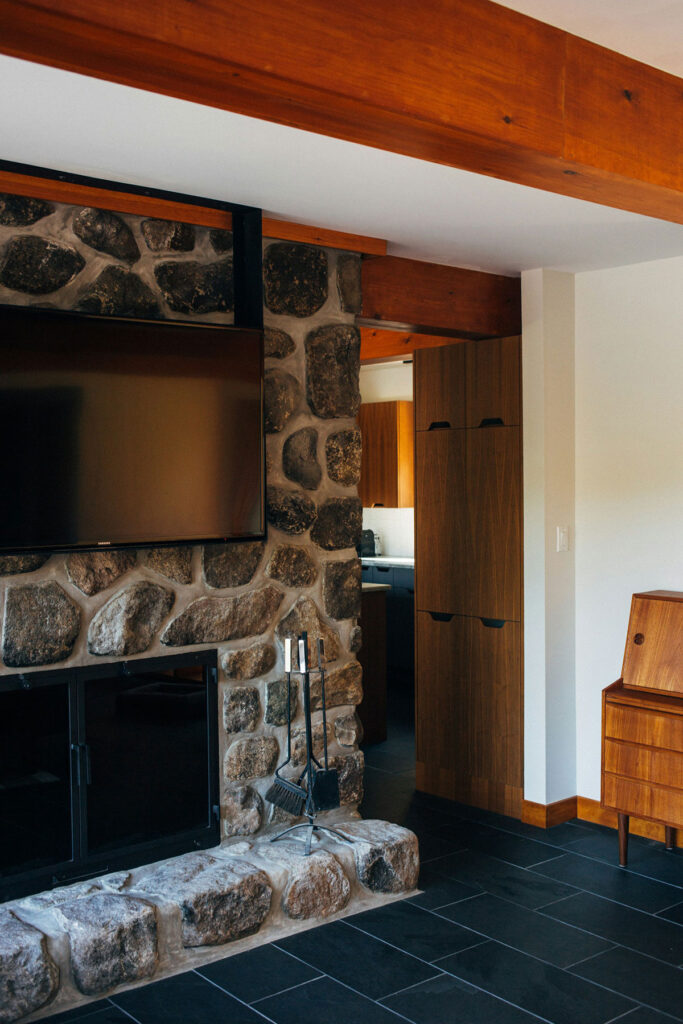Basements are often overlooked spaces with untapped potential. However, with the right lighting strategy, these subterranean areas can be transformed into vibrant, functional, and inviting living spaces. BIC Construction, a leader in construction and renovation, offers a comprehensive guide to basement lighting, providing tips, tricks, and expert advice to illuminate even the darkest corners of your home.
1. Understanding Basement Lighting Needs
Basements typically lack natural light, making artificial lighting essential for creating a bright and welcoming atmosphere. Before diving into lighting fixtures and designs, it’s crucial to assess the unique lighting needs of your basement. Factors to consider include the basement’s size, layout, ceiling height, intended use, and existing electrical infrastructure.
2. Layered Lighting Approach
To achieve optimal lighting in your basement, employ a layered lighting approach that combines different types of lighting fixtures to address various needs and preferences. The three primary layers of lighting are ambient, task, and accent lighting. Ambient lighting provides overall illumination, task lighting offers focused light for specific activities, and accent lighting adds visual interest and highlights architectural features.
3. Ambient Lighting Solutions
Ambient lighting serves as the foundation of basement illumination, ensuring even distribution of light throughout the space. Popular ambient lighting options for basements include recessed ceiling lights, flush-mount fixtures, and track lighting. Consider installing dimmer switches to control ambient lighting levels and create different moods for different occasions.
4. Task Lighting Essentials
Task lighting is essential for illuminating specific areas in the basement where activities such as reading, crafting, or working take place. Install task lighting fixtures such as pendant lights, under-cabinet lights, or adjustable desk lamps above workstations, countertops, and seating areas to provide ample illumination for focused tasks.
5. Accent Lighting Techniques
Accent lighting adds depth, warmth, and visual interest to basement interiors by highlighting architectural details, artwork, or decorative elements. LED strip lights, wall sconces, and picture lights are popular choices for accent lighting in basements. Use accent lighting strategically to draw attention to focal points and create ambiance.
6. Maximizing Natural Light
While basements lack natural light, maximizing the available natural light through strategic design elements can enhance the overall lighting scheme. Consider installing egress windows, light wells, or window wells to bring in natural light and create a more open and airy feel in the basement. Light-colored walls, reflective surfaces, and mirrors can also help bounce and amplify natural and artificial light.
7. Energy-Efficient Lighting Options
Incorporating energy-efficient lighting fixtures and bulbs into your basement design not only reduces energy consumption but also saves on utility bills in the long run. LED lights, CFL bulbs, and motion-activated sensors are eco-friendly alternatives that provide bright, reliable illumination while minimizing energy costs and environmental impact.
8. Lighting Control Systems
Implementing lighting control systems allows you to customize and automate your basement lighting according to your preferences and lifestyle. Smart lighting technologies such as programmable timers, motion sensors, and smartphone apps enable you to adjust lighting levels, create lighting scenes, and remotely control lights from anywhere in the home.
9. Safety and Code Compliance
Ensure that your basement lighting design meets safety standards and local building codes to protect occupants and property. Install emergency lighting fixtures, exit signs, and smoke detectors in compliance with building regulations to enhance safety in case of emergencies. Consult with a licensed electrician to ensure proper wiring, grounding, and electrical safety in your basement lighting installation.
10. Lighting Design Tips and Tricks
- Use layered lighting to create depth and dimension in the basement.
- Opt for LED bulbs with a high Color Rendering Index (CRI) for accurate color representation.
- Position light fixtures strategically to minimize glare and shadows.
- Incorporate lighting controls such as dimmer switches and timers for added flexibility.
- Experiment with different lighting fixtures, styles, and placements to find the perfect balance of form and function.
11. Incorporating Decorative Lighting Features
Elevate the aesthetic appeal of your basement by incorporating decorative lighting features that reflect your personal style and complement your design theme. Chandeliers, pendant clusters, and statement floor lamps can serve as focal points, adding a touch of elegance and sophistication to the space. Mix and match different lighting styles and materials to create a visually captivating ambiance that resonates with your design vision.
12. Utilizing Understair Spaces
Maximize every inch of your basement by utilizing understair spaces for creative lighting solutions. Install recessed lighting, LED strips, or wall-mounted fixtures under staircases to illuminate these often-overlooked areas and create a seamless transition between levels. This innovative approach not only enhances safety but also adds a contemporary flair to your basement design.
13. Customizing Lighting Layouts
Every basement is unique, requiring a customized lighting layout to optimize functionality and aesthetics. Collaborate with lighting designers or experienced contractors to develop a tailored lighting plan that addresses your specific requirements and aligns with your design goals. Consider factors such as furniture placement, room flow, and architectural features when designing your lighting layout to ensure a cohesive and harmonious look.
14. Enhancing Flexibility with Portable Lighting
Incorporate portable lighting solutions such as floor lamps, table lamps, and battery-operated lights to enhance flexibility and adaptability in your basement. Portable lighting allows you to modify the lighting setup easily, experiment with different configurations, and adapt to changing needs and activities. Choose versatile designs that can be easily moved and repositioned to accommodate various scenarios and preferences.
15. Creating Mood Lighting with Color Temperature
Harness the power of color temperature to create different moods and atmospheres in your basement. Warm lighting with lower color temperatures (2700K-3000K) can evoke a cozy and intimate ambiance, perfect for relaxation areas and entertainment spaces. In contrast, cooler lighting with higher color temperatures (4000K-5000K) can create a bright and invigorating atmosphere, ideal for workspaces and activity zones. Experiment with color temperatures to find the right balance that suits your lifestyle and enhances your basement’s functionality.
BIC Construction’s guide to basement lighting mastery provides a comprehensive roadmap for transforming your basement into a well-lit and inviting space. By adopting a layered lighting approach, utilizing energy-efficient solutions, and customizing your lighting design to meet your unique needs and preferences, you can create a basement that is not only functional but also stylish and comfortable. Whether you’re converting your basement into a cozy family entertainment room, a home office, or a versatile multi-purpose space, implementing these tips and tricks will help you achieve lighting excellence and elevate your basement to new heights of beauty and functionality.


